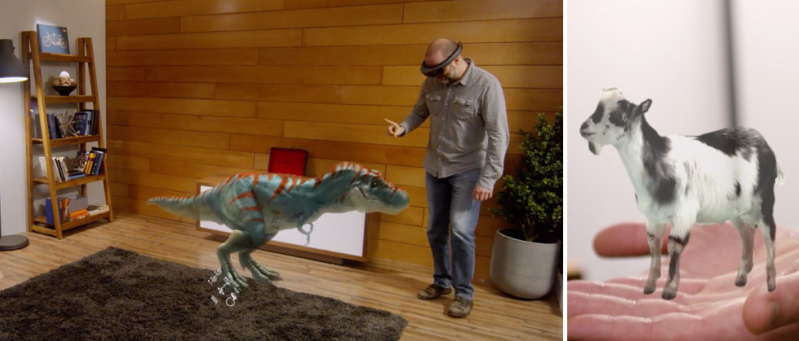
It is pretty clear that 2016 is the beginning of an age of Virtual Reality, unless it just fails to catch on. Sure, the Oculus Rift, HTC Vive, and PlayStation VR are at somewhat affordable prices, but VR by its very nature might not be as ready for the public as it believes. In fact, it is difficult to believe that Microsoft isn't ready for this particular age, even with its Hololens ready to go this season. The issue is that Microsoft's VR device can do a whole lot more, and it is applications like Actiongram that show what the device is truly capable of.
Our last report of the Hololens stated that it was set to ship at the end of March, with pre-orders that began at the end of February. The cost is awfully high at $3,000, but unlike its competitors like the Oculus, Gear VR, HTC Vive, or PlayStation VR, no separate computer (or gaming system) is required to work with it. Those VR headsets only cost a few hundred dollars without their necessary accessories.
Of course, the Hololens isn't just a VR headset like so many others that are being released now. No, the Hololens offers images projected onto the user's actual environment to achieve light directly to the user's eyes for its imagery. There really is a lot of use for a device such as this, and there is a consumer version of it coming soon. However, for those that are fortunate enough to try it out with a developer's kit, then one of the new apps to try out is Actiongram.
Actiongram is an AR movie maker that can allow users to shoot videos of people interacting with Hololens holograms, according to The Verge. This application is made for HoloLens owners to create fun, short, as well as shareable clips for social media.
A good demonstration of this product is a video below which shows how simple AR characters such as astronauts and zombies can be put into certain scenes with some preprogrammed actions. Then it is up for the human actors to interact with them, as well as giving the option of recording sound for them.
The end result is kind of a mixed bag that looks like Microsoft's 1995 3D Movie Maker as well as some low-budget green-screening effect. You'll notice that none of the holographic projections in these videos have any shadows about them. That means that unless you are a professional, you are not going to have Who Framed Roger Rabbit special effects.
However, in a world of social media and constant shared videos, it just makes sense why Hololens would have an application for this. It is also interesting that the video states that those that make videos with some effects can have them done in less time.
In other words, the Hololens is its own viral video marketing maker. Perhaps Microsoft will be the king of these VR competition wars. We shall see.







